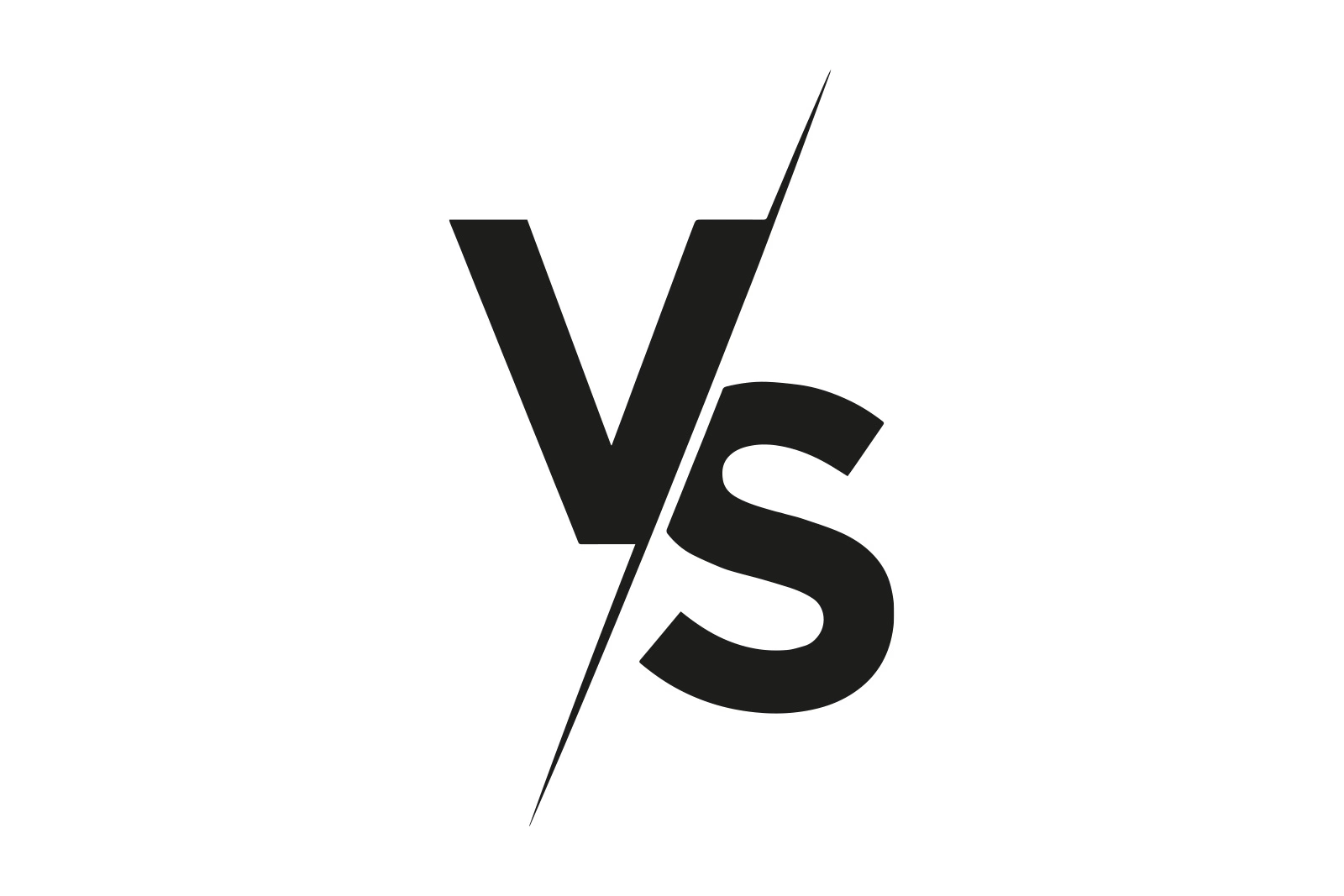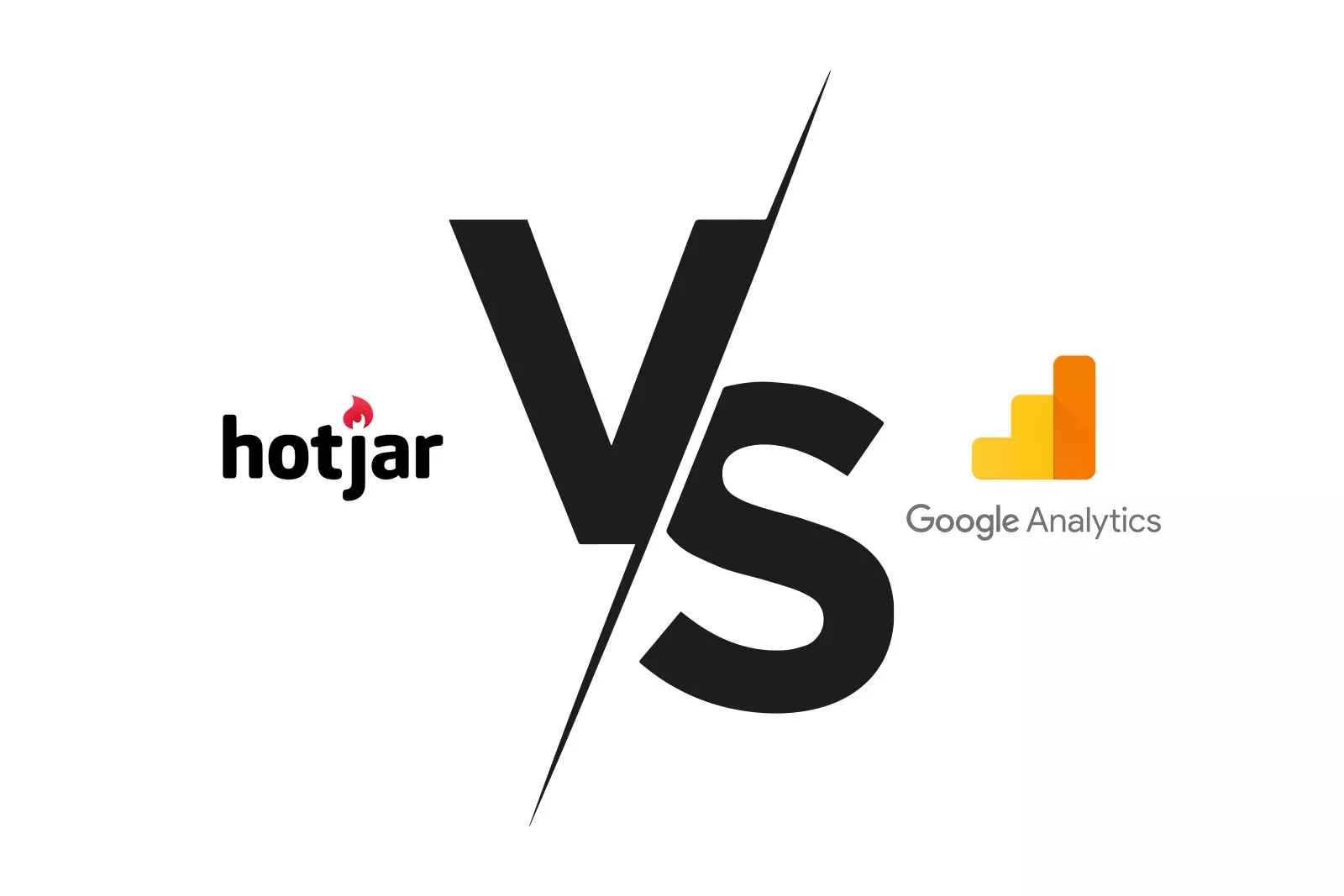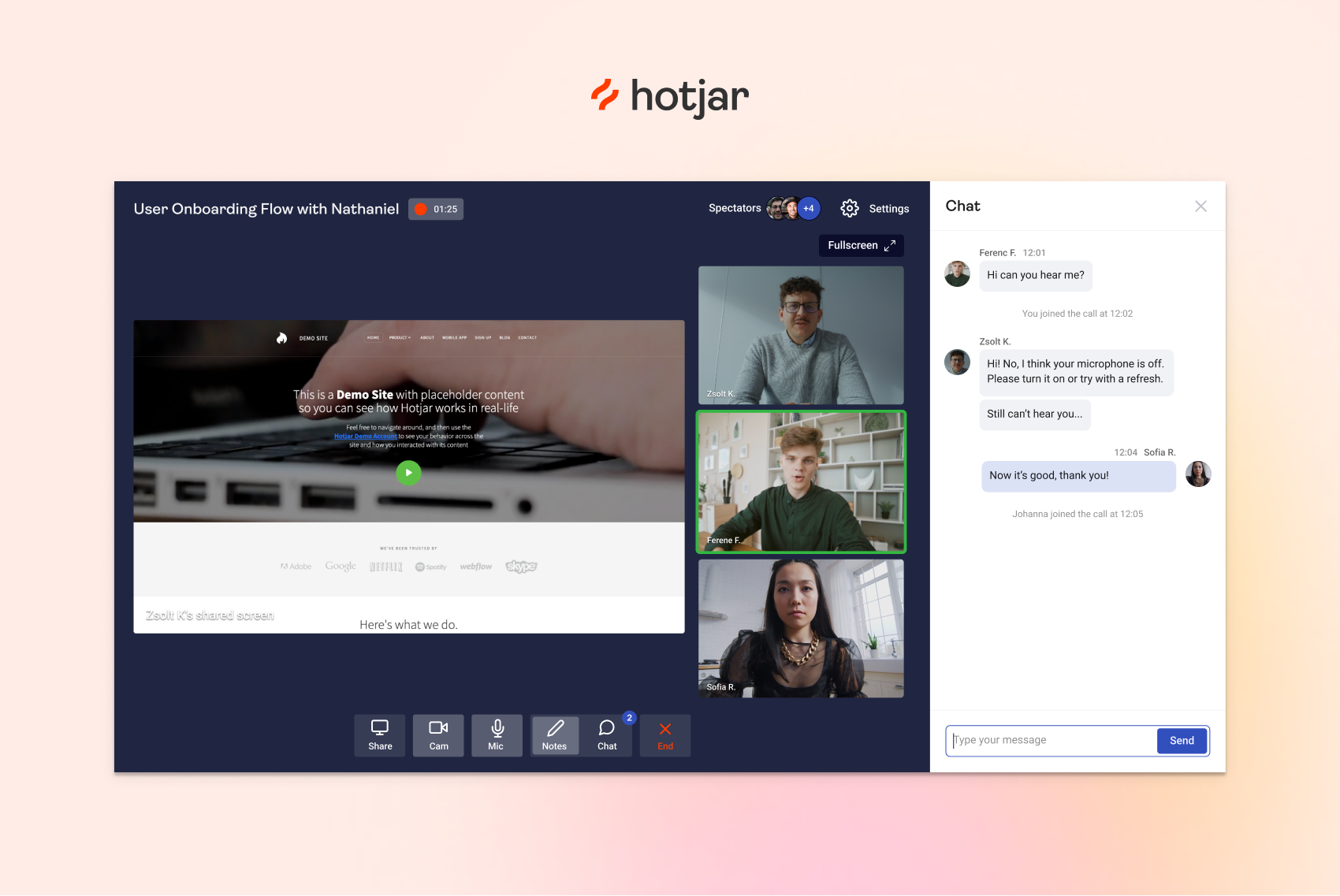As an online business owner, you must know how your users interact with your web app, landing page, website, or...

How to Make a Client Satisfaction Questionnaire (+ Examples)
Everyone has answered a client satisfaction questionnaire or customer satisfaction survey at least once. Chances are, you’ve probably abandoned some midway or simply didn’t participate. Whether the survey is too long, uninteresting, or overly complicated, you’ll notice that some surveys are better than others.
So, how do you get this method down pat?
If you want to maximize survey completion and get insights that you can actually use, you’ll need to master the art of writing survey questions. In this guide, we’ll go over the different types of client satisfaction questions, industry-specific questions, and best practices when writing your own survey.
What’s a Client Satisfaction Questionnaire?
A client satisfaction questionnaire is your go-to tool for finding out how happy your customers are with what you offer. Think of it as a friendly way to ask, “How are we doing?” and get honest feedback. This feedback is like gold because it tells you what customers love, what they’re not thrilled about, and where you can step up your game.
By asking the right questions, you’ll get a clear picture of their experiences and can make smart moves to improve your services and keep your customers coming back for more.
What is Customer Satisfaction Score (CSAT)?
Customer Satisfaction Score (CSAT) is a simple, straightforward metric that measures how happy customers are with a company’s products or services.
It’s usually gauged by asking clients to rate their satisfaction on a scale, like 1 to 5 or 1 to 10. The higher the score, the happier your customers are. CSAT gives you a quick snapshot of customer sentiment and is a key part of understanding overall customer satisfaction.
However, CSAT doesn’t give you the full picture of what your customers think and feel about your brand. Plus, CSAT surveys don’t dig deep enough into who is answering the questions, which leaves you with little to work with in terms of segmenting your customers.
This is where in-depth customer satisfaction questionnaires and surveys come in.
Customer Satisfaction Survey vs. Questionnaire
When gathering customer feedback, you’ll often hear “survey” and “questionnaire” mentioned. While they might seem similar, there are important differences that can help you choose the best approach for your business.
A customer satisfaction survey is a broad method that includes various ways to collect feedback—think multiple questionnaires, interviews, and even focus groups. Surveys are designed to give you a comprehensive look at how satisfied your customers are. They dive deep into customer experiences and opinions, covering a wide range of topics.
Now, a customer satisfaction questionnaire is more focused. It’s a set of specific questions aimed at gathering information from your customers. Questionnaires are all about collecting specific data points and are great for targeting particular aspects of customer satisfaction, like product quality, customer service, or pricing.
Knowing when to use a survey versus a questionnaire can make a big difference in gathering the right feedback for your business. Use a survey when you need comprehensive feedback covering multiple areas like product quality, customer service, and overall experience. Surveys are ideal for in-depth analysis, long-term tracking, and using diverse feedback channels, such as online, phone, in-person, or mail.
On the other hand, use a questionnaire when you need specific information on a particular aspect of your business. They are perfect for targeted issues, like customer service quality or website usability, and for gathering feedback after key interactions, such as a purchase or service completion.
Customer Satisfaction Survey Questions
The golden rule of creating an effective customer satisfaction survey is to ask the right questions. Of course, the questions you ask will depend on your research purposes, so here’s a list of examples you can choose from:
Demographic Questions
Demographic questions give you a peek into who your customers are by gathering some basic but important details about them. This information is super handy when you want to make sure your products, services, and ads hit the right note with your audience.
- How old are you?
- What’s your gender?
- Where do you live?
- What do you do for work?
- What level of school did you finish?
- What’s your household income?
- Are you married?
- Got kids? How many?
- What’s your ethnic background?
- What language do you mainly speak at home?
Psychographic Questions
Psychographic questions dive deeper into what makes your customers tick. They explore your customers’ lifestyles, values, and interests to help you paint a picture of what influences your customers’ buying behaviors and lifestyle choices.
This type of insight can be extremely valuable when you’re trying to connect more meaningfully with your audience or tailor your marketing to resonate better.
Examples:
- What are your favorite hobbies or activities?
- How do you usually spend your weekends?
- What types of books, movies, or TV shows do you enjoy?
- Which brands do you feel really loyal to, and why?
- What are the most important values you live by?
- How do you prefer to learn about new products (social media, email, blogs, etc.)?
- Which social media platforms do you use most, and what do you use them for?
- What type of vacation do you dream about—adventure, relaxation, culture, or something else?
- What motivates you when making a purchase decision?
- How do you like to spend your free time?
Customer Satisfaction Scale
Customer satisfaction scale questions are all about measuring how happy your customers are with various aspects of your business. These questions usually come in the form of ratings like CSAT, which help you quantify satisfaction in a clear and straightforward way.
Essentially, collecting this type of feedback can help you identify strengths and areas for improvement.
Examples:
- On a scale of 1 to 5, how satisfied are you with our product?
- How likely are you to recommend our service to a friend? Rate from 1 to 10.
- From 1 to 5, how well does our service meet your needs?
- Rate the quality of our customer support from 1 to 10.
- On a scale of 1 to 5, how easy was it to use our website?
- How likely are you to return to our store? Give a rating from 1 to 10.
- Rate your overall satisfaction with your purchase, from 1 to 5.
- How would you rate the value for money of our services? From 1 to 10.
- From 1 to 5, how satisfied are you with the speed of our service delivery?
- Rate how well our product features meet your needs on a scale from 1 to 10.
Open-Ended Questions
Open-ended questions are great for diving deeper into your customers’ thoughts and feelings. They allow your customers to express themselves freely and provide richer details and insights that you might not capture with just yes/no or scale questions.
These types of questions can give you a clearer picture of what your customers truly think and feel about your products or services, which you can use to further improve the customer experience.
Examples:
- What do you like most about our product/service?
- If you could change one thing about our product, what would it be?
- What prompted you to choose our product over others?
- Can you describe your experience with our customer service team?
- What features would you like to see added to our product in the future?
- What was your main reason for purchasing our product?
- How can we improve our website to make your experience better?
- What do you think about our pricing?
- How did you hear about us and what was your first impression?
- Is there anything else you’d like to share about your experience with us?
Website and Mobile Apps
These queries help you figure out if your digital platforms are easy to use, look good, and work well for your customers. Getting this feedback is crucial for tweaking things that might be a bit off and keeping up the good stuff that people already love.
- How easy was it to find what you needed on our website?
- What do you think about the design and usability of our mobile app?
- Did you have any trouble navigating our website? If so, what happened?
- How fast does our website load on your device?
- What changes would make our mobile app better for you?
- How secure do you feel when making transactions on our app?
- Was there anything on our website that annoyed or frustrated you?
- How does our app stack up against others you use in terms of ease of use?
- Would you recommend our website or app to someone else? Why or why not?
- How well does our website or app work on different devices, like tablets or phones?
Customer Service or Support
Getting feedback on your customer service tells you how well your team is doing at helping your customers. These questions revolve around finding out if your support is friendly, helpful, and efficient from the customer’s point of view.
This kind of info can guide you in making your support even better and make sure customers are happy and keep coming back.
Examples:
- How helpful was our customer support team in solving your problem?
- Was it easy to get in touch with our customer service when you needed them?
- Did our team sort out your issue to your satisfaction?
- How quick was our response when you reached out for help?
- Do you think our support team knew their stuff?
- Did our customer service live up to your expectations?
- If you’ve needed to contact our support multiple times, has your experience been consistent?
- How clearly did our support team communicate with you during the process?
- Would you say our team members were friendly and polite?
- Is there anything we could do better in terms of customer support?
Pricing
Understanding how customers feel about your pricing can help you make sure your products or services are seen as valuable and competitively priced. Questions about pricing satisfaction help you gauge whether customers feel they’re getting their money’s worth, which can influence their decision to continue using your services or recommend them to others.
Examples:
- How do you feel about the price of our product/service compared to its value?
- Do you think our products are priced fairly for the quality provided?
- How does our pricing compare to similar products/services in the market?
- Would you consider our product/service a good investment? Why or why not?
- Has the pricing ever deterred you from making a purchase?
- What do you think about our pricing options (e.g., packages, subscriptions)?
- How likely are you to continue using our product/service based on the current pricing?
- Would you recommend our product/service to others based on the price?
- Is there anything about our pricing structure you would change?
- Have you taken advantage of any promotions or discounts we’ve offered? If so, did that influence your perception of value?
Customer Satisfaction Survey Template Examples for Different Industries
Creating tailored customer satisfaction surveys for specific industries helps you get the right insights to keep your customers happy and your business growing.
Here are some survey questions designed for various sectors that address their unique needs and common concerns.
eCommerce
Understanding customer interactions and satisfaction with your online store is a must for driving repeat business and fostering loyalty. By asking targeted questions, you can gather valuable insights into how customers navigate your site, the clarity of product information, the efficiency of the checkout process, and their overall satisfaction with the products they receive.
- Was it easy to find what you needed on our site?
- Did the product descriptions and photos give you a good idea of what you were buying?
- How smooth was the checkout process for you?
- What do you think about the quality of the products you received?
- Would you tell your friends to shop with us?
SaaS
For SaaS (Software as a Service) companies, knowing how users feel about your software can tell you if you’re staying ahead of competitors. Customer satisfaction surveys can shed light on user experiences, to help you pinpoint what’s working well and what might need fixing.
- How easy is it to get around our software?
- Do our training materials and guides make it easy for you to get started?
- Does our software meet your business needs effectively?
- How satisfied are you with the support you receive from our team?
- What new features would you like to see in the future?
Healthcare
Patient satisfaction surveys capture feedback on everything from the ease of accessing services to the effectiveness of patient communication. Essentially, the feedback from these questions can help healthcare facilities ensure the delivery of high-quality care and foster a positive healthcare environment.
- How easy was it to schedule an appointment with us?
- Were the medical staff clear and informative when explaining treatments?
- How would you rate the overall care provided by our healthcare professionals?
- Did you feel that the facility was clean and well-maintained?
- Would you recommend our healthcare services to your friends or family?
Retail
Customer satisfaction surveys can give you a clear picture on how your store’s doing from the customers’ point of view and help you understand what customers want and expect.
- Was it easy to find what you were looking for in our store?
- How do you feel about the variety and quality of our products?
- Were you happy with the help our staff provided?
- How quick and smooth was the checkout process?
- Would you recommend our store to your friends or family? Why?
Food and Beverage
When running a restaurant, cafe, or bar, getting direct feedback from customers can help you fine-tune the dining experience.
- What stood out to you about the flavors and presentation of your food?
- Did our menu have enough options to satisfy your taste buds?
- How do you rate your interaction with our service team?
- Could you describe the vibe of our place? Did it enhance your dining experience?
- Based on your visit, would you come back or suggest us to others? What would be your main reason?
Hospitality
In the hospitality industry, guest satisfaction extends far beyond providing a place to sleep; it’s the entire experience from the moment guests walk in the door to the time they check out. Understanding every aspect of their stay is crucial to not just meeting, but exceeding their expectations.
- How did you feel about the efficiency and friendliness of our check-in service?
- Were there any amenities or room features that particularly impressed you?
- How well did our staff respond to your needs during your recent stay?
- What are your thoughts on the amenities provided, like the gym, pool, or spa?
- Would you choose to stay with us again for your next visit to the area? Why or why not?
Financial Services
Financial clients need to feel secure, well-informed, and valued. By gathering detailed feedback, you can identify areas where you excel and areas needing improvement to make sure your services meet client expectations and needs.
- How clear is the information we provide about our products and fees?
- How satisfied are you with how quickly we respond to your inquiries?
- Do you feel secure when using our services?
- Is there a service or product you’d like us to offer that we don’t currently have?
- Would you recommend our services to others? Why or why not?
Human Resources
For Human Resources, understanding how employees perceive your department’s effectiveness plays a huge role in fostering a positive workplace environment. Employees need to feel supported, informed, and valued by HR.
Regular feedback can help you refine your policies and practices to better meet employee needs and enhance overall satisfaction. Incorporating psychometric properties into your survey questions helps make sure that the feedback you collect is reliable, valid, and meaningful.
- How effectively does our HR team handle your concerns?
- Do you feel our HR policies are clear and fair?
- How satisfied are you with the opportunities for professional development?
- What do you think about the benefits and perks offered?
- Would you recommend working here to a friend? Why or why not?
The Cheat Sheet to Making Customer Satisfaction Surveys and Questionnaires
Creating customer satisfaction surveys and questionnaires that actually help you understand your customers and measure satisfaction can make a big difference. So, how do you design surveys that get the insights you need?
Define Your Goals
First off, figure out what you want to learn. Are you trying to improve customer service, global satisfaction, product quality, or the overall experience? Knowing your goals will shape your questions and keep the survey focused. Don’t try to cover everything at once; stick to your main objectives.
Choose the Right Question Types
Pick the right types of questions. Multiple-choice questions are quick and easy for people to answer and help you get clear data. Rating scales (like 1 to 5 or 1 to 10) are great for measuring satisfaction.
Open-ended questions let customers share detailed feedback in their own words. Yes/no questions are simple and useful for clear, direct responses.
Keep It Short and Simple
Make sure your survey is short and easy to understand. Aim for it to take no more than 5-10 minutes. Use clear, straightforward language and avoid jargon, technical terms, or complicated questions.
The simpler it is, the more likely people are to complete it.
Craft Engaging Questions
Create questions that are specific and direct. Ask about particular experiences or aspects of your service. Avoid leading questions that might influence responses. Mixing different types of questions will keep the survey interesting and give you a fuller picture.
Use a Logical Flow
Organize your survey logically. Start with broad questions and then get more specific. Group similar topics together, like customer service, product quality, or website usability. Doing so makes the survey easier to follow and ensures you cover all important areas.
Pilot Your Survey
Test your survey with a small group before rolling it out to everyone to help you spot any confusing questions or issues that need fixing.
Assure Anonymity and Confidentiality
Let respondents know their answers are anonymous and confidential to encourage honest feedback. Assure participants that their responses will be used to improve their experience.
Analyze and Act on Feedback
Look for trends in the valuable information you receive. Identify common themes and areas for improvement. Share the results with your team and use the insights to make informed decisions. Then, implement changes based on the feedback and monitor the impact.
Follow Up
Thank respondents for their time and feedback. Let them know what changes you’ve made based on their input. This shows that you value their opinions and are committed to improving their experience!
Continuously Improve
Regularly review and update your survey to keep it relevant. Use insights from past surveys to refine future ones. Continuous improvement and data collection helps you stay in tune with your customers’ needs and expectations.
Nail Down Customer Satisfaction Levels With FullSession
Measuring customer satisfaction is one thing, comparing it to your operational data (e.g., time spent on site, bounce rate, pages viewed, etc.) is another. With that in mind, you need a tool that does both–and more.
FullSession is your complete stack of web analytics tools that let you get a complete grasp of customer satisfaction, behavior, and experience. Here’s a sneak of what you could be missing:
- Session recording and replay: Capture every user interaction on your website, from clicks to scrolls and keystrokes, and replay them to understand user behavior.
- Heatmaps: Visualize where users are clicking the most on your site.
- Conversion funnel analysis: Set up funnels to track the steps users take towards conversion and identify where they drop off.
- Customer feedback tools: Deploy surveys directly on your website to gather user feedback in real-time and use customizable widgets to collect feedback on specific pages or features.
FullSession Pricing Plans
The FullSession platform offers a 14-day free trial. It provides two paid plans—Basic and Business. Here are more details on each plan.
- The Basic plan costs $39/month and allows you to monitor up to 5,000 monthly sessions.
- The Business plan costs $149/month and helps you to track and analyze up to 25,000 monthly sessions.
- The Enterprise plan starts from 100,000 monthly sessions and has custom pricing.
If you need more information, you can get a demo.
Install Your First Website Feedback Form Right Now
It takes less than 5 minutes to set up your first website or app feedback form, with FullSession, and it’s completely free!
FAQs About Consumer Satisfaction Surveys
What’s the main purpose of a client satisfaction questionnaire?
The main goal is to gather feedback from your clients about their experiences with your products or services. This helps you understand what’s working well and where you might need to make improvements.
How often should I send out client satisfaction questionnaires?
It depends on your business, but a good rule of thumb is to send them out after key interactions (like a purchase or service completion) and periodically (such as quarterly or annually) to track ongoing satisfaction.
How many questions should a client satisfaction questionnaire have?
Aim for a balance between comprehensive and concise. Typically, 10-15 well-crafted questions can give you valuable insights without overwhelming your clients.
What types of questions should I include in my questionnaire?
Include a mix of question types like demographic questions, satisfaction scales, and open-ended questions. This helps you get a well-rounded understanding of your clients’ experiences.
How can I encourage more clients to complete my satisfaction questionnaire?
Make the process easy and quick. Offering a small incentive, like a discount or entry into a prize draw, can also boost response rates. And always let your clients know how their feedback will help improve your services.





